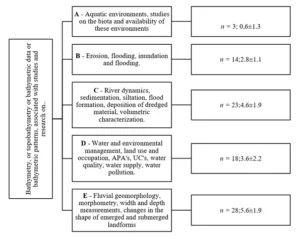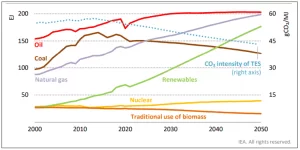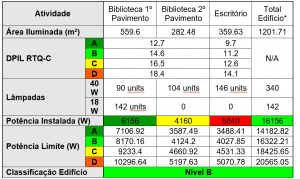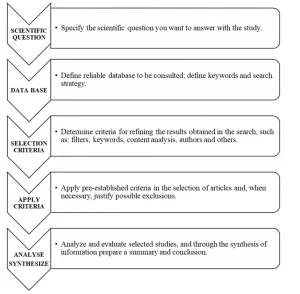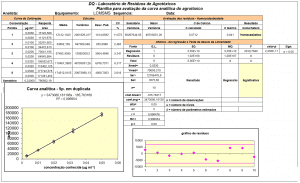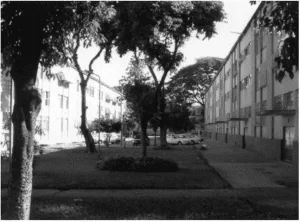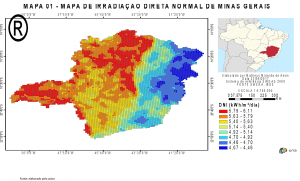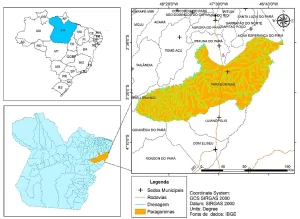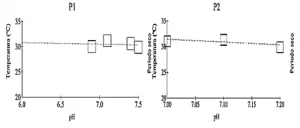ORIGINAL ARTICLE
NUNES, Antônio José Ribeiro [1]
NUNES, Antônio José Ribeiro. Asbestos Mining: An Approach to Environmental Technological Risks and Occupational Health. Revista Científica Multidisciplinar Núcleo do Conhecimento. Year 06, Ed. 06, Vol. 04, pp. 53-63. June 2021. ISSN: 2448-0959, Access Link: https://www.nucleodoconhecimento.com.br/environmental-engineering-en/environmental-technological
SUMMARY
Brazil is one of the world’s largest producers of asbestos or asbestos, this constitutes a mineral, whose natural fibrillum has sedosity and physical and chemical properties of great value for the automotive and construction industry, due to its mechanical strength and ability to withstand high temperatures. Asbestos has a high risk to human health, with devastating effects. Mining in the State of São Paulo and Rio de Janeiro was prohibited, in view of the problems of workers affected by asbestosis, but given its large scale of use in the national industry, most Brazilian regions continue with mining activities. The purpose of this article is to demonstrate the technological and environmental risks in the contemporary productive activities of asbestos mining. It is intended to demonstrate the imminent risks of operations, the effects on the human body in workers with prolonged exposures; occupational diseases resulting from continuous exposure to the mineral. The results show that large-scale use in large production sectors determines their use by applying restrictive measures and worker exposure limits. Even so, this issue is still controversial, considering that São Paulo and Rio de Janeiro abolished the use of asbestos in the face of negative effects on workers’ health. The National Confederation of Industry Workers – CNTI has sought alternatives in view of the importance of asbestos in the national economy whose tendencies are controlled extraction and inspection with methods of environmental pollution testing and the mandatory use of EPIs.
Keywords: Mining, Asbestos, Asbestosis, Environmental Technological Risks, Occupational Health.
1. INTRODUCTION
The use of asbestos scale loading in Brazilian industry has generated many controversies and the attempt to mask environmental and occupational problems related to mining the mineral that presents “different asbestos fibers, both from the group of amphebólios (amosite, crocidolite, anthofilite, actinolite and tremolite) and serpentines (chrysotile)” (WUNSCH FILHO; SNOW; MONCAU, 2001, p. 1).
Currently there is the effort to adapt and expand the Surveillance and Information Systems in Occupational and Environmental Health of Brazilian states for the protection of workers working with asbestos mining. Surveillance is complex in that such an action is often carried out clandestinely. Although the states of São Paulo and Rio de Janeiro have determined the end of asbestos exploitation, many Brazilian municipalities continue to maintain the exploitation of the mineral and the results in workers’ health are visibly diseases and physical disability, deaths from lung neoplasms due to silicosis and other diseases (BARCELLOS; QUITÉRIO, 2006).
The research problem points to the following analysis: How to make the action of environmental surveillance in the field of public health policies in the demands related to the work of asbestos miners?
The assumptions of the study indicate that the most efficient alternatives may be the regular increase in supervision in mining regions, greater access to occupational health care, expansion of procedures in examinations for the completion of diagnoses and the regulation of the activity in order to determine measures that eliminate the rich through the use of Personal Protective Equipment – EPIs (CONFEDERAÇÃO NACIONAL DOS TRABALHADORES NAS INDÚSTRIAS – CNTI, 2013).
The purpose of this article is to demonstrate the technological and environmental risks that arise in contemporary productive activities of asbestos mining. It is intended to demonstrate the imminent risks of operations, the effects on the human body on workers who have been prolonged exposures; occupational diseases resulting from continuous exposure to the mineral.
The choice of the theme in view of the concern with Occupational Safety and Health is justified, considering that the diagnosis of diseases caused by the mineral is complex, besides having rare notifications of occupational diseases in this field of production.
The relevance of the study is to demonstrate the importance of Safety and Health at Work for the efficiency of standardization processes of intervention structures in the work environment of miners in view of economic interests in the market due to the value of asbestos and its vast use in industry.
In the work activity there is a great diversity of occupational risks that require on the part of public health and companies different responsibility in the field of Occupational Safety and Health and Occupational Hygiene as sciences that act directly in research and in the orientation of risk situations in the face of the challenges posed by the production system.
2. DEVELOPMENT
2.1 ASBESTOS MINING: AN APPROACH TO ENVIRONMENTAL TECHNOLOGICAL RISKS AND OCCUPATIONAL HEALTH
Starting from the mining of asbestos and environmental technological risks, society is currently experiencing a constant vulnerability expressed by the aggravation of accidents and diseases of an occupational nature that even safety guidelines are sometimes not sufficient in view of the environmental technological problems generated by production.
Within this approach to vulnerability, the Occupational Safety and Health guidelines have sought to present integrative proposals with the objective of supplanting fragmentary procedures, based on theoretical and methodological foundations in risk analysis techniques in an interdisciplinary and systemic approach, which only present effective results through the full participation of workers in activities to control environmental technological risks (CONFEDERAÇÃO NACIONAL DOS TRABALHADORES NAS INDÚSTRIAS – CNTI, 2013).
In this context of occupational safety and health, the definition of environmental technological risks related to chemical-radioactive effects that produce great risks in productive activities is established, focusing on the comprehensive analysis of “the dangers of technology and its technical, cognitive, social, cultural and philosophical dimensions” (PORTO; FREITAS, 1997, p. 60).
The responsibility of the workers’ health protection agencies to give due support to the National Occupational Safety and Health Policy that is effectively fulfilled, from the point of view of environmental technological risks that cause occupational diseases in all production systems with the objective of determining an interface between safety/hygiene/health and the environmental dimension at work through standardized procedures (MARANO, 2007).
In asbestos mining, epidemiological studies demonstrate the great potential risk is the pleural disease obtained by exposure, whose high prevalence reaches 30% of mining populations in study cuts of up to 10 years that demonstrated the prevalence of diseases such as “laryngeal cancer and some gastrointestinal tumors were also related to asbestos in some studies” (WUNSCH FILHO; SNOW; MONCAU, 2001, p. 1).
From this point of view, labor activities are studied and analyzed under five areas with environmental technological approaches.
Asbestos is a mineral found easily in nature and that by its peculiar characteristics such as flexibility and tensile resistance to chemical, thermal and electrical properties are used commercially in various products, such as cement whose properties make asbestos a mineral used as raw material for the constitution of other elements, from those linked to the components of civil construction , such as cement, tiles, water box, as well as in automotive industries such as canvases, brakes and clutch disc coatings.
According to Martines and Grando (2008, p. 01) due to the properties of asbestos and among them mainly its resistance, this mineral is used in Brazil and in the world in the manufacture of different commercial products. The author also mentions that statically approximately 85% are used by the asbestos cement or fiber cement industries, 10% in the industrialization of auto parts, 3% in textile products and 2% in the manufacture of chemicals/plastics.
However, despite these chemical and physical benefits, asbestos is formed by elements that can be proven to produce health problems, such as lung diseases and cancer.
For Medina (2008, p. 02) some studies have already proven that asbestos is a mineral, whose chemical elements that compose it have carcinogenic potential. These elements of carcinogenic potential can be detected at any time of production, transformation or even use of the mineral.
The author also mentions that according to the World Health Organization (WHO), chrysotile, an element associated with asbestos, can be a triggering factor of numerous pulmonary pathologies, including asbestosis, lung cancer and pleural mesothelioma and peritone. Furthermore, research reveals that there is no safe limit of exposure to the carcinogenic risk provided by this chemical component.
In relation to Asbestosis, according to Martines and Grando (2008, p. 02) it is considered that:
is a lung disease related to prolonged inhalation of dust containing a high concentration of asbestos fibers. The fibers lodge in the pulmonary alveolos, and to defend itself, the body deposits on them a protein similar to a “cement” that heals the alveolo, preventing it from being filled with air. This process, repeating itself over the years, can make the lung fibrous and without elasticity, with breathing difficulties.
With regard to other pathologies caused by contact with asbestos we have that in cases of the appearance of lung cancer, the same are more common when there is an association between smoking and the carcinogen. Moreover, according to Martines and Grando (2008, p. 02) it is considered that between the beginning of exposure to asbestos elements until the onset of the clinical picture of lung cancer, there is a period of time of approximately 20 years.
2.2 RISK MANAGEMENT IN MINING ENVIRONMENTS
Risk management is a systematic action in organizations that develop new models of risk analysis seeking to identify, in the complexity of environmental technological events at work, the factors that simultaneously trigger them, the potential preexisting risk conditions at work (SOUZA; FONTES, 2008).
Veloso Neto (2013) is a devotee of the application of safety management system in asbestos miners. Risk management incorporates the need for periodic inspection of workplaces aimed at evaluating the use of EPIs by workers, as well as exposure time based on reduced service time.
In this context, it is up to the mining company to hire a specialist to manage the proper removal of asbestos so that safety rules are observed in accordance with NR – 15 (Annex 12) that regulates the use in the form of manufacture of the product, being prohibited the use of some types of asbestos.
Technical standardisation, NBR 5643 (MB1090) regulates the manufacture of asbestos tiles, NBR13956-1 which regulates the worker’s exposure process to environments where there are silica risks by determining the analysis guidelines by means of silica level tests in the mining environment.
The other technical standards in the table below refer to environmental analyses relating to testing methods for environmental pollution and concentration of chemicals:
Table 1: Environmental technical standards that may fall within the use of asbestos by mining companies.
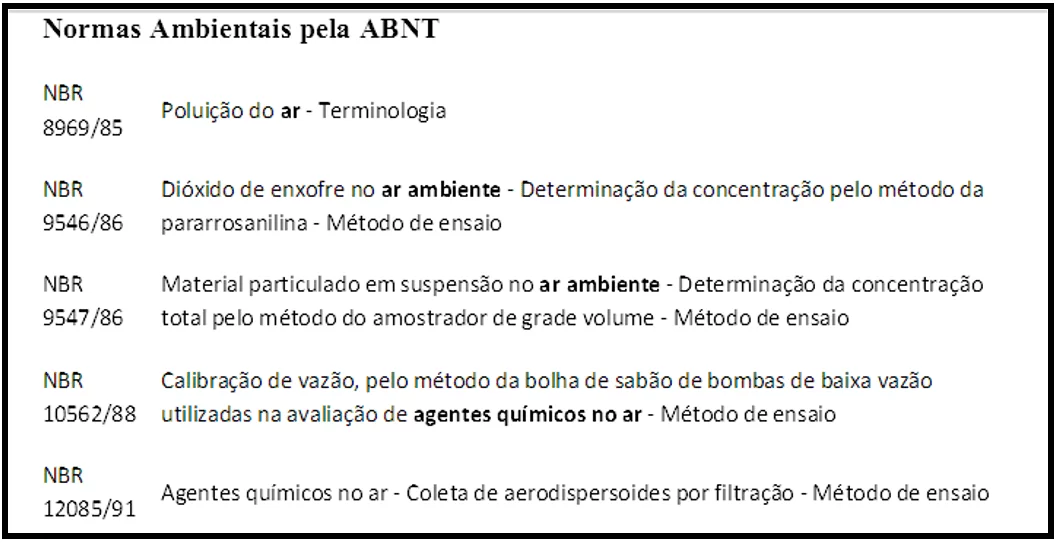
Tavares (2004) analyzes that potentially dangerous production processes, such as actions carried out by workers in asbestos mining environments, in potentially hazardous atmospheres due to silica favor the real probabilities of risks in the face of production forces that put human beings at risk.
Table 2: Risk Management
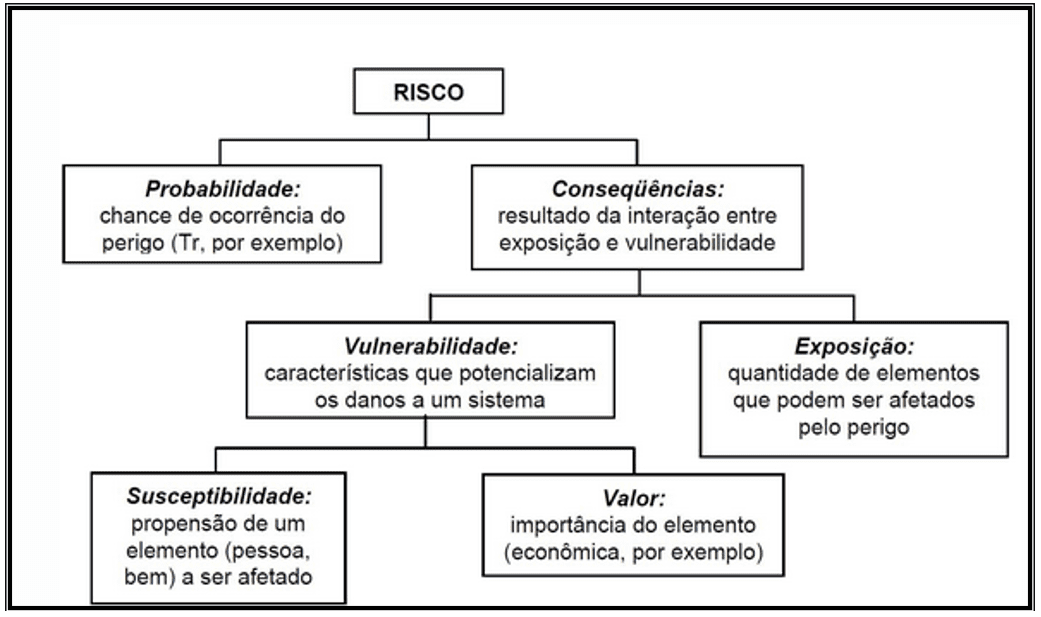
As evidenced, the application of the guidelines of regulatory standards favor the instructions at work in terms of safety and health, as well as prevention measures in the various work environments and productive activities involving the handling of asbestos.
Dangerous events from exposure to asbestos may cause the worker to react adversely. The severity of the event is seen as a consequence of the year generated that can injuries, traumas, death, reduced work ability, etc.
Risk management in asbestos mining implies the definition of risk that involves two important elements: the probability of a risk event and the dangerous consequence of this event characterized by the prevalence of occupational diseases in the medium and long term.
With regard to this legal and operational context of the use of asbestos, it is in agreement with Martines and Brando (2008, p. 03) that there is the so-called Environmental Health Criterion 15 launched by the World Health Organization. Through this criterion, it is oriented that in relation to biopersistent fibers of asbestos must undergo a process of rigid and permanent control in order to minimize toxic and carcinogenic effects.
In the case of risk events, these are derived from activities produced putting at risk the health and physical integrity of the worker. These events arise from the high degree of risks of mineral extraction of asbestos, associated with situations of misinformation and lack of supervision.
Despite all the harm caused by the use of asbestos by industries, there are still no specific laws prohibiting extraction, with the exception of some Brazilian states such as São Paulo and Rio de Janeiro, in other situations of use, most states establish criteria for controlling the exploitation of asbestos, determining the use of EPIs.
It is known that several pathologies are caused by the elements that form asbestos and that these pathologies not only affect mining workers, but also those who work in industries and factories, but also the entire population that resides close to the producing environment.
It is thus considered that the struggle for the use of asbestos insurance by industries should be of all, workers and society, who have the right to live in a healthy environment and risk of harm.
3. FINAL CONSIDERATIONS
The study showed the difficulties of prohibiting the use of asbestos in Brazilian industry. Its large-scale use in large production sectors determines its use by applying restrictive measures and worker exposure limits. Even so, this issue is still controversial, considering that São Paulo and Rio de Janeiro abolished the use of asbestos in the face of negative effects on workers’ health.
The National Confederation of Industry Workers – CNTI has sought alternatives in view of the importance of asbestos in the national economy whose tendencies are controlled extraction and inspection through environmental pollution testing methods and the mandatory use of EPIs.
Currently, the prevention of environmental technological risks induces society to seek alternatives to avoid the vulnerability of workers during the production process, from risk management that can reduce as much as possible the harmful potential of the risks of extraction and asbestos.
The maintenance of extraction activities without the proper precautions of technical standards place the worker in great vulnerability with occupational diseases that with regard to the number of pathological cases that have victimized workers, although currently there are no accurate data, the research referring to those of 1980 and 2001 demonstrates the epidemiological results about occupational diseases and their serious risks.
The Brazilian Constitution determined the full right of workers to live in a healthy work environment free of health risks, without the projection of any kind of environmental technological problems generated by production.
Within this approach of vulnerability, the need for risk management, periodic inspection and creation of a team of professionals to properly inform workers of risks was demonstrated.
REFERENCES
BARCELOS, Christovam; QUITÉRIO, Luiz Antônio Dias. Vigilância ambiental em saúde e sua implantação no Sistema único de Saúde. Revista de Saúde Pública, v. São Paulo, n. 01, ed. 40, jun./fev. 2006.
CONFEDERAÇÃO Nacional dos Trabalhadores nas Indústrias – CNTI. Acordo nacional para extração, beneficiamento e utilização segura e responsável do amianto crisotila 2013 a 2015. Disponível em: <http://www.sinticomex.org.br/ckfinder/userfiles/files/ACT%20CNTA%202015.pdf>. Acesso em: 5 mar. 2021.
MARANO, Vicente Pedro. Doenças ocupacionais. 2. ed. São Paulo: LTr, 2007.
MARTINES, Marco Utrera; BRANDO, Daniela. Amianto: proibição, uso controlado ou imobilização? 2008. Disponível em: <http://ambientes.ambientebrasil.com.br/residuos/artigos/amianto%3A_proibicao,_uso_controlado_ou_imobilizacao%3F.html> Acesso em: 6 mar. 2021.
MEDINA, Damares. O Amianto e as Restrições ao seu uso na Jurisprudência do Supremo Tribunal Federal. Revista Prática Jurídica, São Paulo, v. VII, n. 72, mar. de 2008.
SOUZA, Luis Cláudio Paiva de; FONTES, Carlos Eduardo Mazzuco. Qualidade de vida no trabalho: saúde emocional e gestão estratégica. São Paulo: EDICON, 2008.
TAVARES, José da Cunha. Noções de prevenção e controle de perdas em segurança do trabalho. São Paulo: SENAC, 2004.
VELOSO NETO, Hernani. Construção social do risco e da segurança do trabalho em contexto organizacional. Rio de Janeiro: Civeri Publishing, 2013.
WUNSCH FILHO; V. NEVES, H.; MONCAU, J. E. Amianto no Brasil: conflitos científicos e econômicos. Revista Associação Médica Brasileira, São Paulo, v. 47, n. 3, jul./set. 2001.
[1] Post Graduated – Audit, Management and Environmental Expertise / Work Safety Engineering; Graduated – Mining Engineering.
Submitted: April, 2021.
Approved: June, 2021.

